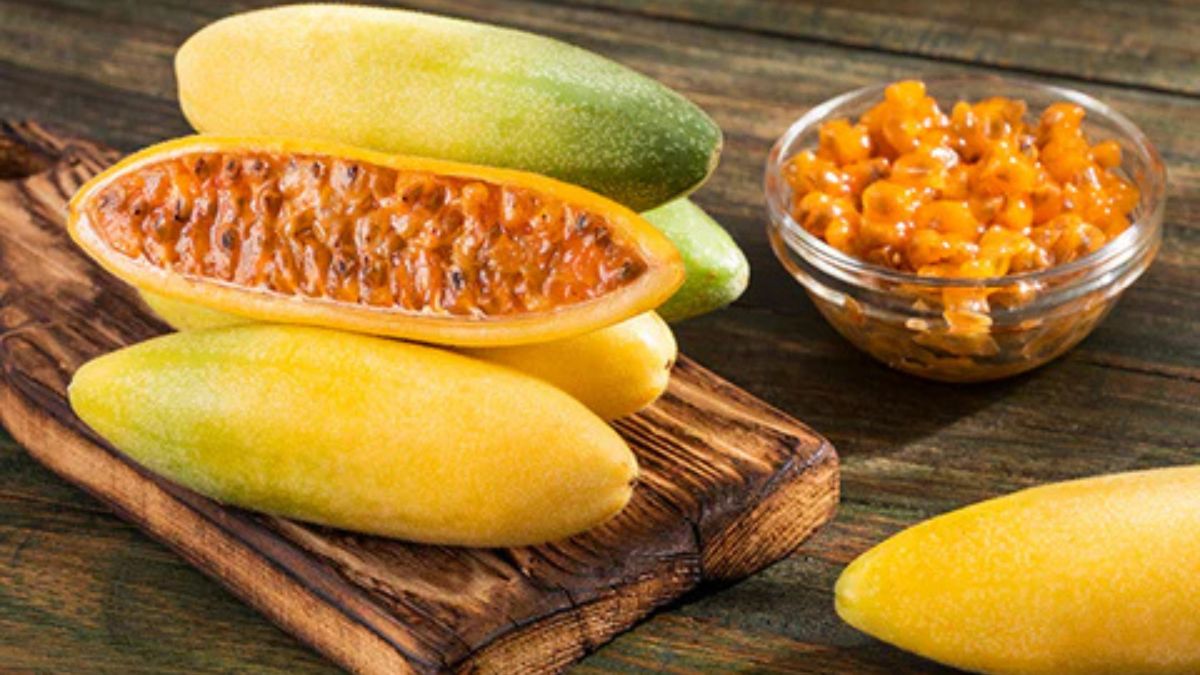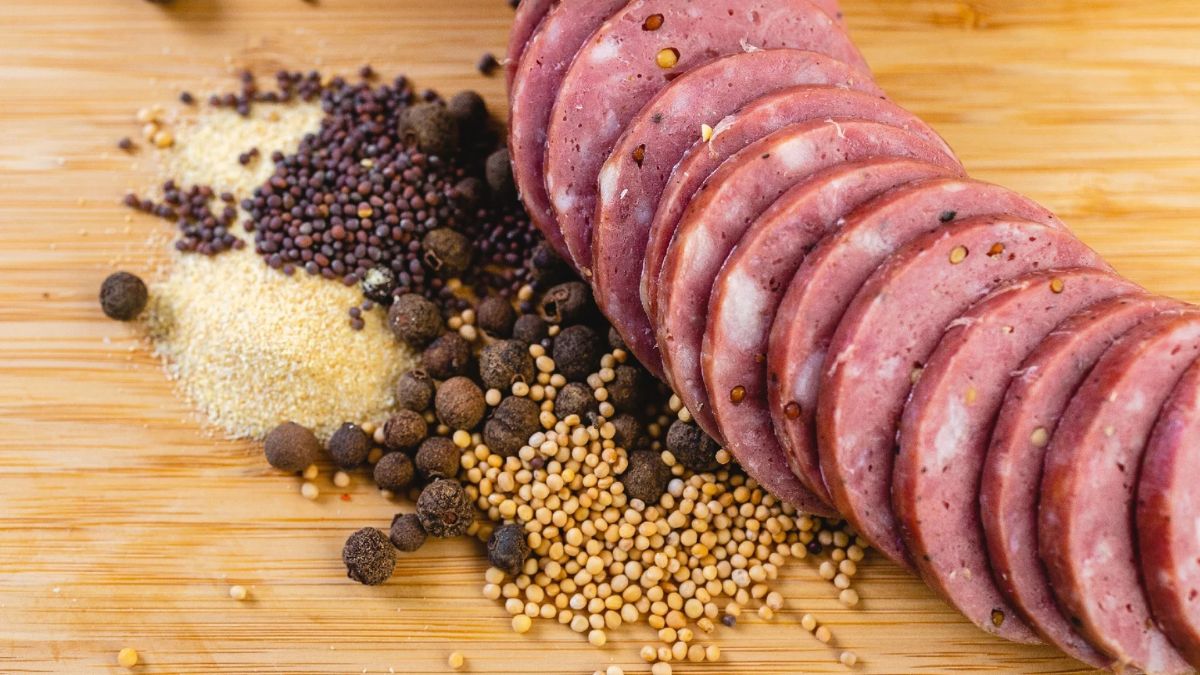FOOD
Chile Pasilla: The Unsung Hero of Mexican Cuisine

When you think of Mexican cuisine, vibrant flavors and bold spices often come to mind. Yet, nestled among the well-known chiles is one that deserves a spotlight of its own: the chile pasilla. This lesser-known gem brings depth and complexity to dishes while remaining an unsung hero in many kitchens. With a rich history intertwined with traditional Mexican cooking, chile pasilla has much more to offer than meets the eye.
So what makes this chili so special? Its unique characteristics elevate a variety of meals, and it can transform simple recipes into culinary masterpieces. Whether you’re a seasoned chef or just starting your cooking journey, it’s time to explore the world of chile pasilla—an ingredient that will undoubtedly enhance your gastronomic adventures. Join us as we dive into its history, uses in cuisine, health benefits, and ways to select only the best quality for your next dish!
The Distinctive Characteristics of Chile Pasilla
Chile Pasilla boasts a unique allure that sets it apart from other chili varieties. Its deep, dark brown color hints at the rich flavors within. The wrinkled skin adds to its character, giving it an authentic rustic appearance.
When you bite into a Chile Pasilla, you’re met with mild heat and complex notes of chocolate and dried fruit. This combination creates a sophisticated taste profile that enhances dishes without overwhelming them.
The aroma is equally captivating—earthy yet slightly sweet, inviting cooks to explore its culinary potential.
Thanks to its moderate spiciness, it’s perfect for those who enjoy flavor over sheer heat. Whether used fresh or dried, Chile Pasilla brings depth and richness that’s hard to replicate in any dish.
Culinary Uses of Chile Pasilla in Mexican Cuisine
Chile pasilla is a versatile ingredient that adds depth to many Mexican dishes. Its rich, smoky flavor enhances sauces, stews, and salsas. Often found in mole recipes, it contributes an earthy undertone.
You can rehydrate dried chile pasilla by soaking it in warm water. This process brings out its vibrant taste and makes it easier to blend into purees or sauces.
Tacos de chile pasilla are a delicious way to enjoy this pepper. Simply stuff them with cheese or meat for a delightful twist on traditional tacos.
For soups and broths, adding chopped fresh or dried pasillas elevates the dish’s complexity without overwhelming heat. They create layers of flavor that keep diners coming back for more.
Whether used whole as a garnish or ground into powder for seasoning, chile pasilla deserves a spot in your culinary repertoire.
Health Benefits of Consuming Chile Pasilla
Chile Pasilla is not just a flavor powerhouse; it also brings several health benefits to the table. Rich in vitamins A and C, this chili helps boost your immune system. These nutrients play a crucial role in maintaining skin health and enhancing vision.
Moreover, Chile_Pasilla contains capsaicin, which has been linked to improved metabolism. Including this spicy delight in your meals may help with weight management by boosting energy expenditure.
Antioxidants present in Chile_Pasilla can combat oxidative stress within the body. This contributes to better overall health and can lower the risk of chronic diseases.
Additionally, consuming Chile Pasilla may improve digestive health due to its fiber content. Fiber aids digestion and promotes gut health while helping you feel full longer between meals.
Embracing Chile Pasilla isn’t just about taste; it’s a step toward incorporating healthy elements into your diet as well!
Where to Find and How to Select the Best Quality Chile Pasilla
Finding quality chile pasilla can elevate your culinary creations. Start by visiting local Mexican markets or specialty grocery stores. These places often carry fresh, dried varieties of this flavorful pepper.
When selecting chile_pasilla, look for deep brown to black skins that are slightly wrinkled. Avoid any peppers with spots, mold, or excessive moisture; these can indicate spoilage.
For dried chiles, a fragrant aroma is essential—this tells you they’re fresh and packed with flavor. If possible, give them a gentle squeeze; they should feel firm yet pliable.
If shopping online, opt for reputable vendors who specialize in authentic Mexican ingredients. Check reviews to gauge the freshness and quality before making a purchase.
Storing your selected chile pasilla properly also matters—keep it in an airtight container away from light and heat to maintain its vibrant taste longer.
Delicious Recipes Featuring Chile Pasilla as the Star Ingredient
Chile pasilla shines brightly in a variety of Mexican dishes. One delightful option is the classic mole sauce. Its smoky flavor adds depth, transforming every bite into a culinary adventure.
Another favorite is chile_pasilla stuffed with cheese or meat. Roasting these peppers enhances their sweetness while creating a tantalizing contrast to savory fillings.
Try incorporating ground chile pasilla into your homemade taco seasoning for an unexpected twist. It elevates traditional flavors and gives tacos an irresistible kick.
For soup lovers, consider making a rich pozole infused with dried pasillas. The result is both comforting and aromatic, perfect for any gathering.
Blend them into salsas or dips to excite your appetizer spread. The complexity of their taste will surprise your guests and leave them wanting more!
Conclusion: Why You Should Try Cooking with Chile Pasilla
Chile pasilla is not just another ingredient; it’s a culinary treasure that offers depth and flavor to countless dishes. Its unique taste profile can elevate your cooking, making even the simplest recipes feel gourmet. Whether you’re crafting traditional Mexican fare or experimenting with fusion cuisine, this versatile chili pepper deserves a spot in your pantry.
Exploring chile_pasilla opens up new possibilities for enhancing your meals. The smoky undertones and earthy notes add richness that is hard to replicate with other ingredients. Plus, its health benefits make it an excellent choice for those looking to spice things up both on their plates and in their diets.
If you’re seeking something different to invigorate your home-cooked meals, consider giving chile pasilla a try. Your taste buds will thank you as you discover the vibrant world of flavors this unsung hero has to offer. Embrace the adventure of cooking with chile pasilla—you might just find yourself falling in love with its charm and versatility!
FOOD
E622 Explained: The Hidden Ingredient in Your Favorite Foods

Have you ever glanced at a food label and wondered what E622 really is? If so, you’re not alone. This mysterious ingredient pops up in many of our favorite snacks and meals, raising eyebrows and questions among health-conscious consumers. Known as sodium glutamate or monosodium glutamate (MSG), it’s often shrouded in controversy. While some people embrace its flavor-enhancing qualities, others are wary of its potential effects on health.
In this blog post, we’ll take a closer look at E622—unpacking its role in the foods we love, exploring the debates surrounding it, and offering tips for navigating your diet if you’re keen to avoid it. Let’s dive into the world of E622!
The Controversy Surrounding E622
E622, also known as sodium glutamate, has sparked heated debates among consumers and health experts alike. While many enjoy its flavor-enhancing properties in various dishes, others raise concerns about its safety.
Some studies suggest a link between E622 and adverse reactions like headaches or allergic responses. This raises questions about how sensitive individuals may react to foods containing this additive.
On the flip side, proponents argue that moderate consumption poses no significant risk. They point out that countless products utilize E622 without issues for most people.
The lack of definitive research leaves room for speculation. As more people become label-conscious, they often question what goes into their food. The controversy surrounding E622 reflects broader discussions on food additives and transparency in the industry.
The Effects of E622 on the Body
E622, also known as sodium glutamate or monosodium glutamate (MSG), is often a topic of debate when it comes to its effects on the body. For many, consuming foods with E622 can lead to an array of reactions.
Some individuals report headaches, sweating, and even nausea after eating meals containing this ingredient. This phenomenon is sometimes referred to as “Chinese Restaurant Syndrome.” While these symptoms may not affect everyone, they are significant for those who do experience them.
On the flip side, E622 can enhance flavor and improve food palatability. Many enjoy its savory taste in dishes ranging from snacks to main courses.
Research continues into how MSG interacts with our bodies over time. Some studies suggest that excessive consumption might impact metabolic health or contribute to obesity but findings remain inconclusive for now.
Common Foods that Contain E622
E622, also known as soy lecithin, is a common ingredient lurking in many processed foods. It’s often used for its emulsifying properties, helping to blend oil and water-based ingredients.
You might find E622 in chocolate products. It helps keep the texture smooth and prevents separation.
Baked goods like cakes and pastries may also contain this additive. Manufacturers appreciate its ability to improve shelf life.
Many salad dressings rely on E622 too. It ensures that oil and vinegar mix seamlessly.
Even some dairy alternatives utilize this ingredient for creaminess and consistency. Look closely at labels when reaching for non-dairy milks or yogurts.
Snack foods aren’t exempt either; potato chips frequently include E622 to enhance flavor and maintain freshness while providing a pleasant mouthfeel.
How to Avoid E622 in Your Diet
Avoiding E622 in your diet can be straightforward with a bit of awareness. Start by reading labels diligently. Ingredients must be listed, and if you see “E622” or “sodium glutamate,” it’s time to rethink that product.
Opt for whole foods whenever possible. Fresh fruits, vegetables, grains, and meats are less likely to contain additives like E622. Cooking at home allows you to control what goes into your meals.
When shopping packaged foods, look for brands that focus on natural ingredients. Many companies pride themselves on transparency regarding what they use.
Consider exploring specialty stores or farmer’s markets for organic products free from artificial additives. These options often steer clear of controversial ingredients like E622.
Educate yourself about common cuisines known for using flavor enhancers and choose alternatives that prioritize health over convenience. Making informed choices puts you in charge of what you consume daily.
Natural Alternatives to E622
If you’re looking to replace E622, several natural alternatives can enhance your meals without the added chemicals.
One popular option is nutritional yeast. It offers a cheesy flavor while being rich in vitamins and minerals.
Another great substitute is miso paste. This fermented soybean product adds depth and umami to dishes, making it perfect for soups and dressings.
For those seeking a thicker texture, arrowroot powder or cornstarch works wonders as a thickening agent in sauces and gravies.
Herbs like basil or oregano can impart flavor without any of the additives found in processed foods. They are versatile enough for various cuisines.
Consider using vegetable stock instead of bouillon cubes that may contain E622. Homemade stocks allow you complete control over ingredients while providing robust flavors to your recipes.
FOOD
Discovering Curuba: The Exotic Fruit You Need to Try

Curuba, a fruit that sounds like it belongs in a tropical paradise, is slowly making waves beyond its native regions. Often overshadowed by more popular fruits, this exotic gem deserves your attention. With its vibrant hue and unique flavor profile, curuba offers not just a tasty treat but also a wealth of nutritional benefits. Curious about where it comes from and how you can incorporate it into your meals? Let’s dive deeper into the delightful world of curuba and discover why this fruit should be on your radar!
Nutritional benefits of Curuba
Curuba, also known as the banana passionfruit, packs a nutritional punch that can enhance any diet. This vibrant fruit is rich in vitamins A and C, which support immune function and skin health.
It’s also high in fiber. Fiber aids digestion and promotes a feeling of fullness, making curuba an excellent choice for weight management.
Moreover, curuba contains antioxidants that combat oxidative stress in the body. These compounds may help reduce inflammation and lower the risk of chronic diseases.
With its low-calorie count, curuba allows you to enjoy a sweet treat without guilt. The combination of nutrients makes it perfect for those seeking both taste and health benefits in their meals or snacks.
How to incorporate Curuba into your diet
Curuba is a versatile fruit that can elevate your meals in many ways. Try adding fresh curuba to your morning smoothie for a tropical twist. Its tangy flavor pairs wonderfully with bananas and spinach.
For breakfast, mix curuba into yogurt or oatmeal. The vibrant color and unique taste will make your dish stand out while offering added nutrition.
Consider using it in salads too. Chopped Aruba adds a refreshing touch alongside leafy greens, nuts, and cheese.
If you’re feeling adventurous, experiment with curuba juice as a base for cocktails or mocktails. It’s an excellent way to impress guests at your next gathering.
Don’t forget about desserts! Curuba can shine in sorbets or ice creams, providing both sweetness and an exotic flair to treat yourself after dinner.
Recipes using Curuba
Curuba is a versatile fruit that can elevate various dishes. Its unique flavor pairs beautifully with both sweet and savory ingredients.
Start your day by adding curuba puree to smoothies. Blend it with bananas, yogurt, and a splash of honey for a refreshing breakfast treat.
Consider using curuba in desserts too. A simple curb sorbet is easy to make—just blend the fruit with sugar and freeze until firm. This bright dessert will impress guests at any gathering.
For something savory, try blending curuba into salad dressings or marinades. It adds an unexpected twist that complements grilled chicken or fish splendidly.
Don’t forget about baking! Use curuba in muffins or pancakes for a delightful change from the ordinary flavors you might be used to. Its tangy sweetness can transform traditional recipes into something special without much effort.
Where to find and buy Curuba
Finding curuba can be an adventure in itself. This exotic fruit is cherished primarily in South America, particularly in Colombia and Ecuador.
Local markets are the best places to discover fresh Aruba. Farmers’ markets often showcase seasonal produce, making it a prime spot for picking up this unique fruit.
If you’re not in South America, fear not! Many specialty grocery stores now stock international fruits like curuba. Some online retailers also offer frozen or dried versions.
When searching online, look for reputable sellers who focus on exotic fruits. They may even provide recipes or tips on how to enjoy Aruba at home.
Remember to check your local health food store too; they might surprise you with their selection of rare goodies from around the world. Happy hunting!
The cultural significance of Curuba in South America
Curuba holds a special place in the hearts of many South Americans. This exotic fruit, also known as banana passionfruit, is deeply rooted in the traditions of countries like Colombia and Ecuador.
In local cultures, curuba is more than just food; it symbolizes warmth and hospitality. Families often serve curuba juice or desserts to guests as a gesture of welcome.
The fruit’s vibrant color reflects its lively cultural significance. Festivals celebrating harvests frequently feature curuba dishes, showcasing its versatility. It brings communities together through shared recipes and culinary experiences.
Indigenous groups have long revered Aruba for its nutritional benefits. They believe it possesses healing properties that contribute to overall well-being.
Even today, you can find artisans crafting jams and sauces from this beloved fruit, preserving age-old techniques passed down through generations. Curuba embodies not only flavor but also rich history across diverse regions in South America.
Conclusion: Why you should give Curuba a try
Curuba is more than just an exotic fruit; it’s a delightful journey for your taste buds. With its unique flavor profile and impressive nutritional benefits, this tropical gem deserves a spot in your diet. The versatility of curuba makes it easy to incorporate into various meals and snacks, adding both taste and health benefits.
Exploring recipes featuring curuba can be a fun culinary adventure. Whether blended into smoothies or used in desserts, the possibilities are endless. Plus, finding Aruba has become simpler as awareness grows about this fantastic fruit.
Beyond its flavors and health perks, curuba carries cultural significance in South America that connects people with their heritage. It’s not just food; it tells stories of tradition and community.
So why hesitate? Embrace the opportunity to try something new. Curuba could very well become one of your favorite fruits!
FOOD
DIY Summer Sausage: Tips and Tricks for Making Your Own at Home

Summer sausage — the name alone conjures images of picnics, backyard barbecues, and gatherings with friends. This savory treat is a beloved staple for charcuterie boards and snack platters alike. But have you ever thought about making your own summer sausage at home? Crafting this flavorful delicacy can be both rewarding and delicious. With just a few ingredients and some basic tools, you can create a version that perfectly suits your taste preferences.
Imagine slicing into a beautifully crafted log of summer sausage that you’ve made yourself. The flavors are bold, the textures perfect, and best of all — it’s uniquely yours. Whether you’re looking to impress guests or simply enjoy a homemade snack during those lazy summer days, diving into the world of DIY summer sausage opens up endless possibilities for creativity in flavor combinations.
Let’s explore how easy it is to make summer sausage at home while enjoying every step of the process!
The Benefits of Making Your Own at Home
Making your own summer sausage at home offers a rewarding experience. You have complete control over the ingredients, allowing you to choose high-quality meats and spices that suit your taste.
Homemade sausages often come without preservatives or artificial additives. This means you’re enjoying a product that’s not only fresher but also healthier for you and your family.
Cost-effectiveness is another compelling reason. Store-bought options can be pricey, while making it yourself can save money in the long run.
Experimentation is key when creating your unique flavors. You can mix herbs, spices, and even different types of meat to craft something truly special that reflects your culinary style.
There’s a sense of pride in crafting something from scratch. Sharing your homemade summer sausage with friends or family adds an extra layer of enjoyment to any gathering.
Necessary Tools and Ingredients
To make delicious summer sausage, you’ll need a few essential tools. A meat grinder is crucial for achieving the right texture. If you don’t have one, consider using pre-ground meats.
A reliable sausage stuffer is also important. This tool helps you fill casings evenly, creating that perfect bite every time.
Don’t forget about your mixing equipment! A large bowl and sturdy spatula are necessary for blending spices and meats thoroughly.
Now, let’s talk ingredients. Start with high-quality pork or beef as your meat base. You’ll want fat content to ensure flavor and juiciness.
Spices like black pepper, garlic powder, and mustard seed will elevate your summer sausage to new heights. Curing salt is vital too; it not only enhances flavor but also preserves the meat safely.
Choose natural hog casings or synthetic alternatives based on preference—both work well for this savory treat.
Step-by-Step Guide to Making Summer Sausage
Start by gathering your ingredients. You’ll need ground meat—beef, pork, or a mix works well. Also grab spices like black pepper, garlic powder, and mustard seed for that classic flavor.
Next, combine the meat and spices in a large bowl. Mix them thoroughly until everything is evenly incorporated. This step is crucial for ensuring each bite bursts with flavor.
Once mixed, pack the mixture into sausage casings tightly. Make sure to eliminate any air pockets as you go along. Twist off sections of the casing to create individual sausages.
Now it’s time to cure the sausage. Place it in a refrigerator overnight to allow those flavors to meld together beautifully.
After curing, smoke or bake your sausages at a low temperature until they reach an internal temperature of 160°F (71°C). This process adds depth and richness that sets homemade summer sausage apart from store-bought varieties.
Tips for Perfecting Your Recipe
To perfect your summer sausage, focus on the meat quality. Choose fresh cuts with a good fat-to-meat ratio for optimal flavor and texture.
Seasoning is key. Experiment with spices like garlic powder, black pepper, or crushed red pepper flakes to find your ideal blend. Don’t shy away from adding mustard seeds or coriander for that extra zing.
Pay attention to the curing process. Letting your sausage rest in the fridge overnight allows flavors to meld beautifully.
Keep an eye on the drying time as well—too long can lead to overly dry sausage while too short may leave it undercooked.
Invest in a reliable smoker or oven thermometer. Consistent temperature control ensures even cooking and helps develop that signature smoky aroma everyone loves.
Creative Variations and Flavor Combinations
Experimenting with flavors can elevate your homemade summer sausage to a whole new level. Think outside the box!
Consider adding different spices, such as smoked paprika or coriander, for a unique twist. Garlic and onion powder also enhance the savory profile beautifully.
Fruits can add an unexpected sweetness. Dried cranberries or apricots complement the rich meat flavors well. For those who love heat, incorporating jalapeños or crushed red pepper flakes brings an exciting kick.
Herbs like rosemary or thyme infuse freshness into every bite. Or try mixing meats—beef combined with pork creates a delightful balance of textures and tastes.
Don’t forget about cheese! Cubes of cheddar or chunks of pepper jack can turn your sausage into something truly indulgent. Each bite becomes a flavorful surprise that keeps friends and family coming back for more.
Storing and Serving Your Homemade Summer Sausage
Storing your homemade summer sausage properly is key to preserving its flavor and texture. Once cooled, wrap each log in butcher paper or vacuum-seal it for best results. This keeps moisture out while allowing the meat to breathe.
Refrigeration is ideal for short-term storage. Your sausage can last up to three weeks when kept at a consistent temperature. For longer preservation, consider freezing individual portions. Just be sure to label them with the date so you know exactly what you have on hand.
When it’s time to serve, slice the sausage thinly for charcuterie boards or thicker for sandwiches. Pair it with cheeses, pickles, and crusty bread for an impressive spread that’s perfect for gatherings or quiet evenings at home.
Don’t forget about garnishing! Fresh herbs or spicy mustard can elevate your presentation and enhance flavors beautifully.
Conclusion: Enjoying the Fruits (or Meats) of Your Labor
After all the careful preparation and attention to detail, there’s nothing quite like enjoying your homemade summer sausage. The satisfaction that comes from crafting it yourself is unmatched. Slice into your masterpiece and savor the unique flavors you’ve created.
Pair it with cheese, crackers, or fruits for a delightful charcuterie board. Use it in sandwiches or as a savory snack on a road trip. The options are endless.
Don’t forget to share your creations with family and friends. They’ll appreciate the effort you’ve put into this delicious treat. Plus, they’ll likely want the recipe themselves!
So gather those ingredients and tools, unleash your creativity in the kitchen, and transform simple meats into something extraordinary. Your tastebuds—and anyone lucky enough to indulge—will be grateful for your efforts!
-

 TECHNOLOGY10 months ago
TECHNOLOGY10 months agoExploring the Benefits of Using Tanzohub for Your Blog
-

 ENTERTAINMENT10 months ago
ENTERTAINMENT10 months agoThe Legendary Career of the Half of a 1990s-2000s Rock Duo with Six Grammys
-

 HEALTH9 months ago
HEALTH9 months agoThe Ultimate Guide to Using Greenheal.net for Holistic Wellness
-

 HEALTH10 months ago
HEALTH10 months agoThe Secret Ingredient for Radiant Skin: All About Oridzin
-

 HEALTH11 months ago
HEALTH11 months agoQxefv: The Ultimate Solution for Stress Relief and Wellness
-

 NEWS9 months ago
NEWS9 months ago5 Fascinating Facts About Mgj Doppy Tlae That Will Blow Your Mind
-

 ENTERTAINMENT7 months ago
ENTERTAINMENT7 months agonhentai 455058: The Ultimate Guide to Understanding this Fan-Favorite Manga
-

 NEWS11 months ago
NEWS11 months agoUnlocking the Potential of SSIS 816 in Data Integration
